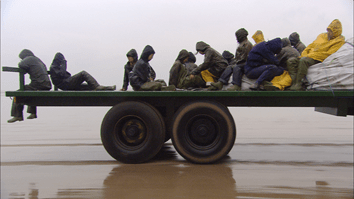![sa0200906[1]_Page_1 sa0200906[1]_Page_1](http://safetyatworkblog.files.wordpress.com/2009/05/sa02009061_page_1.jpg?w=212) The Northern Territory OHS authority issued a guidance this week about unrestrained travel in work vehicles, a practice many of us stopped some time ago. Obviously not everyone has.
The Northern Territory OHS authority issued a guidance this week about unrestrained travel in work vehicles, a practice many of us stopped some time ago. Obviously not everyone has.
The NT guidance is a curious document as it strongly advocates that employers assess the hazards of unrestrained travel and decide the appropriate control measures. This advice is in line with legislative requirements and safety management protocols but clearly the authority has much clearer advice. The document is headed
“No seat – No belt – No ride”
The assessment has been done and the heading gives the best advice. In OHS profession speak – if there is no seat for a passenger and/or no seat belt then NT OHS says allowing someone to travel on or in the vehicle is not acceptable.
Australia can often be glib about workplace incidents as it always looks past its region for comparisons from the US or Europe rather than looking at its immediate neighbourhood.
Singapore’s Strait-Times reported in May 2009 about the real consequences of unrestrained travel after
“…three foreign workers sitting in the back of a lorry died after it crashed into the back of a trailer. A fourth man in the front seat also died.”
The article goes on to list the law changes that Singapore has introduced but, more interestingly, tells how much more complicated the issue is than in Australia due to the level of foreign labour.


